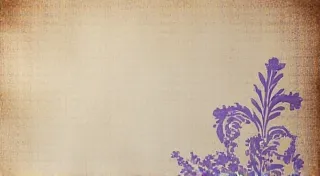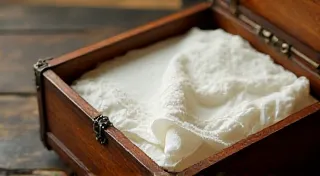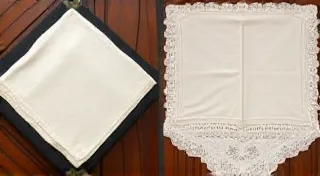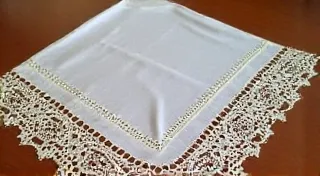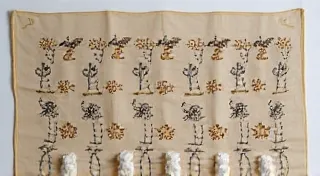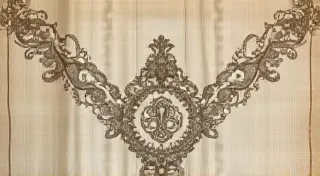Understanding Antique Handkerchief Fabrics: Linen vs. Cotton vs. Silk
Antique handkerchiefs are charming pieces of history, offering a tangible connection to the past. Identifying them isn’t just about recognizing patterns or monograms; a crucial element is understanding the fabric they're made from. The fabric dictates age, quality, and often significantly impacts the handkerchief’s value. This article will guide you through the characteristics of three common antique handkerchief fabrics: linen, cotton, and silk. Recognizing these distinctions can help you understand their origins and appreciate the intricate details of these delicate treasures.
Linen: The Classic Choice
Linen, derived from the flax plant, was a favored choice for handkerchiefs throughout much of the antique period. It's renowned for its strength and absorbency, making it ideal for its intended purpose. Historically, linen was often associated with higher social status due to the labor-intensive process required for its production. This connection to luxury contributed to its enduring popularity across generations.
Identifying Linen:
- Texture: Linen has a distinctive crisp feel with a slightly rough texture, even after washing. It’s often described as having a “slubbed” appearance – small, irregular bumps or ridges along the fibers. These "slubs" are a natural characteristic of linen and a key identifier.
- Weight: Linen can range in weight, but antique linens are generally heavier than modern cotton. The heavier weight contributes to the handkerchief's overall durability and feel of quality.
- Weave: Look for a plain weave or a looser weave. The characteristic "slubs" are more prominent in older linen weaves. A closer look at the weave can provide clues about the manufacturing techniques prevalent during a particular era.
- Color: Antique linen often has a natural cream or beige color, though it may have aged to a darker hue. The subtle variations in color are a testament to the passage of time and the natural aging process.
Age & Value Considerations: Linen handkerchiefs from the 18th and 19th centuries are highly sought after. The presence of age-related discoloration (patina) and evidence of hand finishing can increase value. A significant portion of identifying antique linens involves assessing these details; sometimes, even slight imperfections tell a story of careful, hand-crafted quality.
Cotton: A Rising Star in the 19th Century
While linen reigned supreme earlier, cotton began to gain popularity throughout the 19th century, particularly as mechanized production made it more readily available and affordable. This shift marked a significant change in textile accessibility and impacted the types of handkerchiefs commonly held by individuals. Initially, cotton was often seen as a more budget-friendly option compared to linen, democratizing access to these personal accessories.
Identifying Cotton:
- Texture: Cotton is generally softer than linen, with a smoother feel. This softer texture contributed to its increasing appeal as a comfortable everyday accessory.
- Weight: Antique cotton handkerchiefs can vary in weight, but are typically lighter than linen. The lighter weight made cotton handkerchiefs more comfortable to carry and use.
- Weave: Cotton handkerchiefs may feature a plain weave, a batiste weave (a fine, semi-sheer weave), or other simple weaves. Batiste, with its delicate and airy quality, became particularly fashionable for ladies' handkerchiefs.
- Color: Cotton can be dyed in a wider range of colors than linen, though natural dyes will show signs of fading over time. The increased range of colors offered a greater opportunity for personal expression.
Silk: The Luxury Choice
Silk handkerchiefs represent the pinnacle of luxury. Reserved for special occasions or given as gifts, they are prized for their exquisite drape and shimmering appearance. The smooth and elegant feel of silk elevates it beyond mere functionality; it's a statement of refinement and status. Often found intricately embroidered or adorned with delicate lace, silk handkerchiefs were symbols of wealth and sophistication.
Identifying Silk:
- Texture: Silk is incredibly smooth and feels cool to the touch. It has a characteristic "floaty" quality. The ethereal and fluid nature of silk contributes to its captivating beauty.
- Weight: Silk is generally lighter than both linen and cotton. The lightness allows for graceful movement and enhances the luxurious feel.
- Weave: Silk handkerchiefs often feature a satin weave, which creates a lustrous surface. This particular weave contributes to the characteristic sheen and smooth drape of silk.
- Color: Silk readily accepts dyes, resulting in a wider range of colors than linen. The vibrancy and intensity of silk dyes add to its visual appeal.
Age & Value Considerations: Antique silk handkerchiefs are highly desirable, particularly those with intricate embroidery or unique designs. Damage, such as watermarks or tears, can significantly reduce value. The presence of a maker's mark or label can also impact collectability. Careful handling and storage are crucial for preserving these delicate treasures. Discovering details about identifying Irish Crochet handkerchiefs, a popular embellishment on silk, can greatly enhance appreciation for the craftsmanship involved.
Fabric is just one piece of the puzzle when identifying and valuing antique handkerchiefs. Consider these additional factors:
- Embroidery: The style, quality, and complexity of the embroidery can indicate age and origin.
- Monograms/Initials: These can help trace the handkerchief's ownership and potentially uncover family history.
- Edge Finish: Hand-rolled edges or intricate lace edging are hallmarks of older handkerchiefs.
Beyond the fabric, the overall condition and details like the edge finish contribute significantly to a handkerchief's value and story. Maintaining antique textiles requires specialized care; it's important to understand best practices for how to care for your antique handkerchief collection to ensure their preservation for future generations. The subtle interplay of these elements transforms a simple piece of fabric into a tangible link to the past.
Understanding the nuances of antique handkerchief fabrics—linen, cotton, and silk—is the first step in appreciating these historical treasures. By carefully examining their characteristics and considering the other factors mentioned, you can uncover fascinating details about their origin, history, and significance. The journey of discovery is an integral part of the enjoyment of collecting antique handkerchiefs, revealing stories woven into the very fabric of time.
